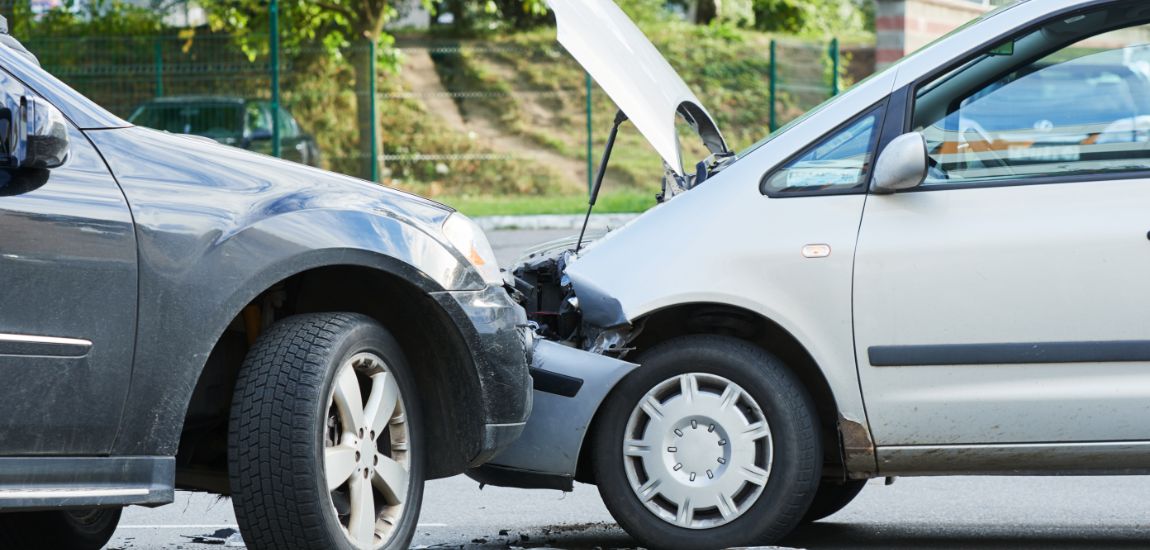Though most of us have gone through a driver’s education course, it can be difficult to remember all of the minutia surrounding road rules. There are details and regulations that can easily become confusing, and many of us simply drive on autopilot the more we practice. Though this is natural, it is not necessarily safe. If you’ve had an accident in the state, you need to contact a Colorado car accident lawyer right away.
Unfortunately, many adults who feel as though driving is second nature often make serious mistakes when they drive. If left unchecked, these habits can cause an accident, injury, or worse. Whether you recently went through driver’s education or did so decades ago, it’s important to understand what it means to yield the right of way. If you fail to execute these laws properly, you can easily hurt someone and make yourself liable to pay for the damages.

Yielding the Right of Way
There are many different scenarios in which a driver may yield the right of way. However, the basic idea is that one driver is responsible for letting another driver or pedestrian move before they do. For example, when cars are turning left across traffic, the turning car must yield the right of way to the car going straight. This means the turning car must wait for the car going straight to pass before safely making the turn. If the right of way were reversed, the cars going straight would be responsible for waiting until the turning car went before proceeding forward.
Traffic signals and road signs largely exist to allow drivers to anticipate the actions of others and to show all drivers when and how to yield the right-of-way where appropriate. Failure to follow these indicators can lead to serious accidents. Drivers are expected to use good judgment and follow the rules of the road at all times, and failure to yield the right-of-way, even when it appears reasonably safe, can easily result in liability for a resulting accident.
Yielding to Pedestrians
It’s important to know that no matter the situation, pedestrians almost always have the right of way. This means you, as the driver, are responsible for letting the pedestrian proceed on their route before you may proceed on yours. If there is a crosswalk or intersection, the pedestrian should be allowed to go first before any cars can proceed through the crosswalk or intersection. If there is a green light at an intersection, cars turning right must wait for pedestrians to cross before proceeding.
These are just a few examples of when pedestrians have the right of way. According to Colorado law, pedestrians have the right of way over cars in every situation. However, if a pedestrian illegally crosses the street and steps in front of a driver who had no time to avoid a collision, it is possible for that pedestrian to face a diminished recovery due to their own negligence contributing to the accident.
Yielding and Bicycles
Many bicyclists seem to forget that they have the same responsibilities as cars do when it comes to yielding the right of way. They must behave in the same way that vehicles do in the above situations, meaning that they must give priority to pedestrians as well. Unfortunately, many bicyclists fail to do this, which can cause serious bicycle and pedestrian accidents. Other bicyclists try to avoid this law by riding on the sidewalk. In all scenarios, they must be cognizant of pedestrians at all times and behave as any motor vehicle does.
Penalties for Failing to Yield
If you do not yield the right of way to the correct parties and a police officer catches you, you automatically get three points deducted from your license. You may also face a fine of anywhere from $60-$120. If you fail to yield to an emergency vehicle such as an ambulance or a fire truck, you get four points deducted from your license and a fine of anywhere from $80-$160. These punishments only apply if you fail to yield but don’t hurt anyone.
If you fail to yield and cause an accident or injury, there are more charges you could face. You could face personal injury, wrongful death, or even vehicular manslaughter charges depending on your situation. It’s important to understand that license points and fines are a best case scenario. The reality may be much worse.
Under the right circumstances, failing to yield could cost you significant time in prison. For this reason, it’s important to take all road rules seriously and adhere to them closely.
Proving Fault for an Accident
If another driver caused an accident because they failed to yield the right-of-way, they are likely to look for anything they can find to justify their actions or deflect blame in their efforts to avoid liability for the resulting damages. The state’s fault rule means that an at-fault driver is liable for any damages they cause to others, but the injured driver will need to firmly establish fault before they will be able to recover any compensation for their losses.
Various forms of evidence often prove vital in car accident cases, especially those resulting from failure to yield the right-of-way. If anyone else saw the accident happen in real time, their witness statements could be essential to your case. Nearby traffic cameras may have captured the accident, showing how the other driver failed to yield and helping you prove fault. Ultimately, you may require multiple forms of evidence to establish liability.
It is also important for drivers to remember that it is possible for an accident to occur due to the actions of multiple parties. For example, one driver may have failed to yield the right-of-way, but the other driver involved in the crash was speeding. In cases like these, comparative fault applies and may diminish an injured driver’s recovery. Each party found responsible for causing the accident will face a share of liability for the resulting damages.
If you attempt to secure compensation for your damages after an accident from failure to yield but you are found partially liable, it will diminish the compensation available to you under Colorado’s modified comparative fault rule. Under this rule, each liable party has a fault percentage assigned that indicates how much of the damages they are responsible for repaying. It’s possible for multiple defendants to share fault, or a defendant and plaintiff may share fault.
A plaintiff can still recover compensation if they are less than 50% at fault, but whatever fault percentage they hold is the percentage of their final case award they lose to reflect this. For example, 30% fault results in the loss of 30% of the damages sought from the defendant. If a plaintiff is found 50% or more at fault, they cannot seek compensation from any other party and will need to pay for their own damages.
Comparative fault will diminish recovery from both an auto insurance claim and a subsequent personal injury suit. If you recently experienced an accident that you believe occurred because another driver failed to yield the right-of-way, but you are worried that you share responsibility for the accident, it is vital to reach out to an experienced attorney as soon as possible to discuss your case.
FAQs on What in Colorado Does Yielding the Right of Way Mean?
What Is the Difference Between Yielding and the Right of Way?
These two terms are very similar. Yielding is the action of waiting for another car or pedestrian to proceed before moving forward on one’s own route. The right of way describes which party should be able to proceed without slowing or stopping to wait for someone else. The person who has the right of way can proceed without delay, while the yielding party must slow or stop to accommodate the other person.
What Are Two Examples of Yielding Right of Way?
One example would be if you arrive at a four-way stop at the same time as another car. According to the law, the car to the immediate right has the right of way and should go first, while the car on the left waits for the other to pass. Another example occurs when going through a roundabout. The cars inside have the right of way, while the cars entering the traffic circle must wait for an appropriate time to merge into traffic. In other words, the latter must yield.
How Do You Know Who Has the Right of Way at an Intersection?
The driver who arrives at an intersection first has the right of way. If multiple cars arrive at the intersection around the same time, they can depart in the order that they arrived. If multiple cars arrive at the same time, the car on the right goes first. If there is a pedestrian at the intersection, they have the right of way before any cars do, even if they arrive at the intersection after one of the vehicles.
In What Driving Situations Would You Yield the Right of Way?
There are many situations in which you may need to yield the right of way. Examples include:
- When merging into traffic
- When turning left
- When approaching a pedestrian crosswalk
- When going into a traffic circle or roundabout
There are many other situations that may require you to yield the right of way. There are many yield signs that dictate special scenarios where a driver must wait for others to pass.
Contact the Law Firm of Jeremy Rosenthal
For nearly two decades, our team at the Law Firm of Jeremy Rosenthal has been helping individuals and families who are the victims of car accidents or other personal injury scenarios. With our help, you can get the compensation you need and deserve after an accident.
For more information about how we can help in your case, please contact us online today.

